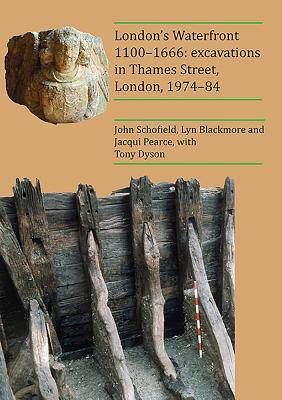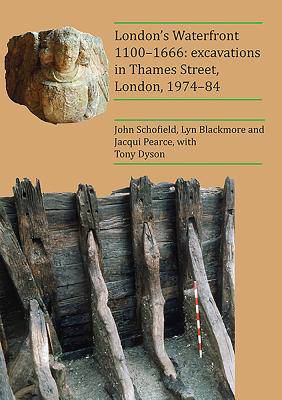
- Retrait gratuit dans votre magasin Club
- 7.000.000 titres dans notre catalogue
- Payer en toute sécurité
- Toujours un magasin près de chez vous
- Retrait gratuit dans votre magasin Club
- 7.000.0000 titres dans notre catalogue
- Payer en toute sécurité
- Toujours un magasin près de chez vous
London's Waterfront 1100-1666
Excavations in Thames Street, London, 1974-84
John Schofield, Lyn Blackmore, Jacqui Pearce
Livre relié | Anglais
121,95 €
+ 243 points
Description
London's Waterfront 1100-1666: excavations in Thames Street, London, 1974-84 presents and celebrates the mile-long Thames Street in the City of London and the land south of it to the River Thames as an archaeological asset. The argument is based on the reporting of four excavations of 1974-84 by the Museum of London near the north end of London Bridge: Swan Lane, Seal House, New Fresh Wharf and Billingsgate Lorry Park. Here the findings of the period 1100-1666 are presented. Buildings and property development on sixteen properties south of Thames Street, on land reclaimed in many stages since the opening of the 12th century, include part of the parish church of St Botolph Billingsgate. The many units of land reclamation are dated by dendrochronology, coins and documents. They have produced thousands of artefacts and several hundred kilos of native and foreign pottery. Much of this artefactual material has been published, but in catalogue form (shoes, knives, horse fittings, dress accessories, textiles, household equipment). Now the context of these finds, their deposition in groups, is laid out for the first time. Highlights of the publication include the first academic analysis and assessment of a 13th- or 14th-century trumpet from Billingsgate, the earliest surviving straight trumpet in Europe; many pilgrim souvenirs; analysis of two drains of the 17th century from which suggestions can be made about use of rooms and spaces within documented buildings; and the proposal that one of the skeletons excavated from St Botolph's church is John Reynewell, mayor of London in 1426-7 and a notable figure in London's medieval history. The whole publication encourages students and other researchers of all kinds to conduct further research on any aspect of the sites and their very rich artefactual material, which is held at the Museum of London's Archaeological Archive. This is a significantly large and varied dataset for the archaeology and history of London in the period 1100 to 1666 which can be continuously interrogated for generations to come.
Spécifications
Parties prenantes
- Auteur(s) :
- Editeur:
Contenu
- Nombre de pages :
- 544
- Langue:
- Anglais
Caractéristiques
- EAN:
- 9781784918378
- Date de parution :
- 30-04-18
- Format:
- Livre relié
- Format numérique:
- Genaaid
- Dimensions :
- 216 mm x 277 mm
- Poids :
- 1791 g

Les avis
Nous publions uniquement les avis qui respectent les conditions requises. Consultez nos conditions pour les avis.






